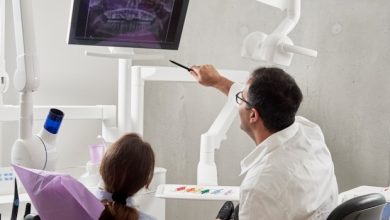How Tech Is Changing the World of Nonprofit Medicine

The world of healthcare is rapidly changing due to the integration of technology. For nonprofits that provide medical services and treatments, this technological evolution can present great opportunities and daunting challenges. With many organizations looking for ways to increase their impact while stretching financial resources, seeing how tech revolutionizes nonprofit medicine can be a major beacon of hope in an uncertain landscape. From utilizing AI-driven software solutions to providing telemedicine visits remotely, entrepreneurs are discovering endless potential for improved care with emerging technologies. In this blog post, we’ll explore how technology is transforming nonprofits and look at strategies that could help these essential services succeed into the future.
Telemedicine
Telemedicine has been a game-changer in the world of healthcare. It’s providing healthcare access to people who previously haven’t had access to it. This technology allows healthcare professionals to communicate with patients who are in remote areas. With the help of platforms like Skype, Zoom, and Facetime, doctors can perform consultations and prescribe medication remotely. Nonprofit organizations such as the American Red Cross and Doctors Without Borders are utilizing telemedicine to connect with underprivileged communities in war-torn, underdeveloped areas to provide medical care without showing up in person.
Crowdfunding Platforms
Instead of relying on in person fundraising, large donors, and hefty grants, nonprofits can now utilize crowdfunding platforms to help quickly raise money. These online platforms connect organizations in need with potential donors, and fundraising efforts can quickly gain traction through the ability to share these campaigns on social media. Starting a medical practice is expensive, and these costs are amplified when you provide nonprofit services. Because of this, crowdfunding platforms are key in helping these organizations serve the most amount of patients as possible.
Cloud Computing
Cloud computing has significantly transformed the way nonprofit medicine organizations operate. By utilizing the power of the cloud, nonprofits can now store and access valuable medical data remotely, anywhere, anytime. Cloud computing also paves the way for telemedicine, enabling health practitioners to connect with patients in rural or remote areas. Additionally, cloud computing facilitates secure data sharing among nonprofits, accelerating collaboration and knowledge-sharing among medical professionals. The benefits of cloud computing in nonprofit medicine are clear- it allows for greater efficiency, cost savings, and ultimately better healthcare for those who need it most.
Wearables & Health Applications
The development of wearable devices and health applications has empowered individuals to take control of their health. Wearables like Fitbit, Apple Watch, and Smartwatches are popular in the market. They allow patients to track their health information such as monitoring heart rate and daily steps. Nonprofits also provide health apps. These health applications can track blood pressure, glucose, and cholesterol levels and track self-care management. NGOs like SmileTrain encourage patients with cleft lips to track their post-surgical recovery using the Smile Train Journey Application. The application allows doctors to monitor and communicate with patients, ensuring a safer recovery process.
Mobile apps are changing the way patients engage with healthcare services. A plethora of healthcare apps on the app store allow users to track their health, find nearby healthcare facilities, and even consult with doctors remotely. Nonprofit organizations have also started using mobile apps to provide healthcare services and education to vulnerable populations. Apps like mDiabetes, developed by the Indian government, provide diabetes education and support to millions of people in India.
3D Printing
3D printing is being embraced in nonprofit medicine due to its flexibility. Nonprofit organizations can significantly reduce expenses by 3D printing medical objects like prosthetics or anatomical models. Sometimes, printing a 3D object costs less than obtaining it from the manufacturer. One such organization using this technology is e-NABLE, which provides free 3D printing designs and tutorials to create low-cost prosthetics for underprivileged individuals.
Technology has opened the door to innovative solutions in nonprofit medicine, making life easier and better for patients and medical professionals. Telemedicine offers convenience and healthcare access to patients who would otherwise struggle to receive it, while wearables, cloud computing, and health apps give medical professionals unprecedented insight into their patient’s well-being. Finally, 3D printing is changing how medical devices are developed and distributed, enabling companies to create cheap yet custom-made pieces of equipment. The world of nonprofit medicine is certainly not what it used to be, and while there are still many challenges facing this sector moving forward, these technological advances are creating a more accessible, healthier present for us all.




